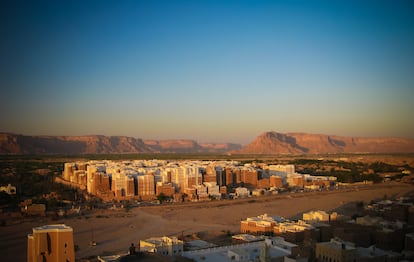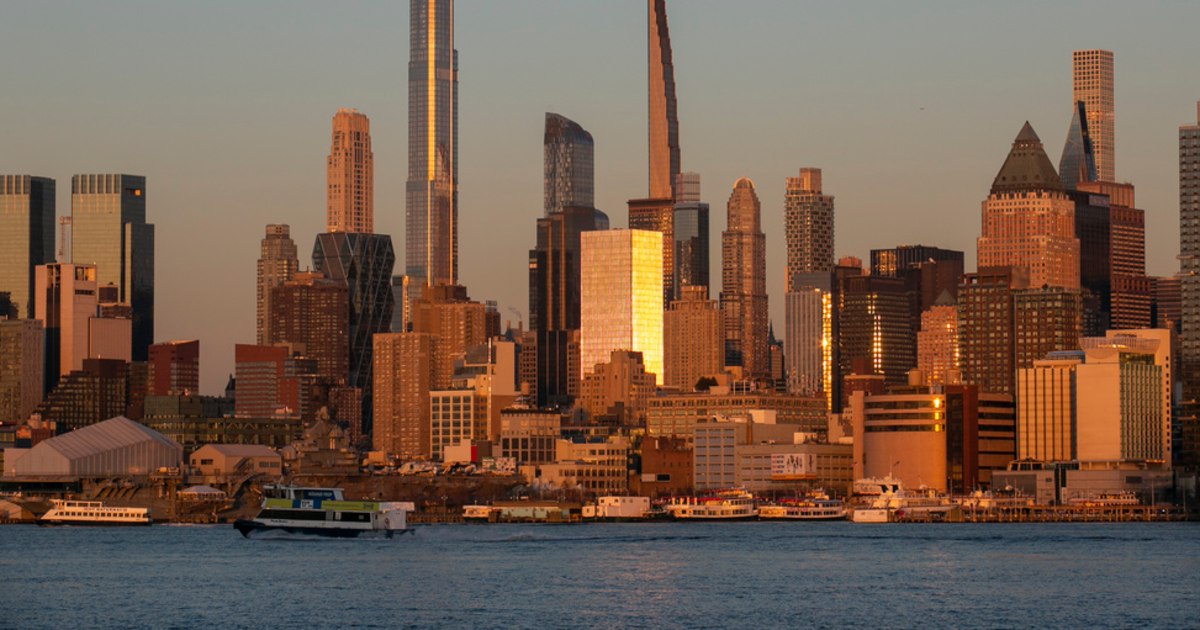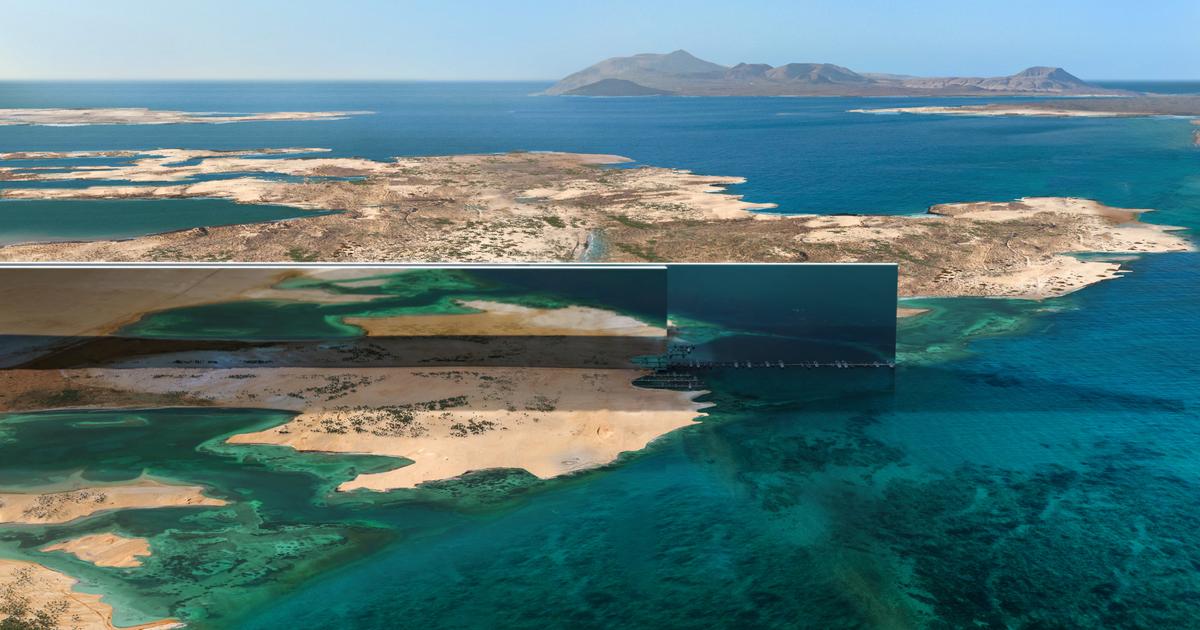What is a skyscraper?
According to the Royal Spanish Academy, a high-rise, many-story building.
Surely the definition is correct, perhaps only because it is imprecise.
How tall is great height?
And how many floors are many floors?
Therefore, there is no consensus or a precise definition that allows identifying and classifying the building that defines modern architecture.
Because, in reality, the definition of skyscrapers is as diffuse as its image is global.
We all know what a skyscraper is when we see a photo of one: a modern tower.
This Chicago building is considered the first modern skyscraper.
But what if it's not modern?
In the canonical treatises, it is considered that the first skyscrapers were born in the city of Chicago at the end of the 19th century as a consequence of the rising cost of the land, the use of the steel structure and the invention of the elevator.
The rise in the price of land forced to make the most of the surface of the plots, and this was done by putting one floor on top of the other;
the steel structure made it possible to thin the load-bearing elements of the building;
and the elevator (the brake system, actually) made the habitability of floors beyond the seventh or eighth plausible.
After all, no one was going to be willing to walk up and down 160 steps every day to go to the office.
However, already in ancient Rome there were buildings of up to ten heights that were accessed by elevators pulled by mules or slaves.
Why don't we consider these buildings to be skyscrapers?
Well, because they do not fit the canonical image.
They weren't towers because they weren't slender.
That is the key.
The skyscraper is not a high-rise building with many stories;
It is a slender building made up of floors placed one on top of the other.
Yes, it is true that for this canonical image of slenderness to be fulfilled, it is essential that the building be modern, because a light structure that does not occupy too much floor will be necessary.
But it does not always happen that way.
In the Middle East, in the middle of the desert, there is a city full of skyscrapers.
Slender towers made up of floors that are placed one on top of the other.
Towers together and tight that challenge the rest of the neighboring buildings in height.
But it is not Dubai, because the skyscrapers of this city are neither modern nor made of steel;
they were built more than four hundred years ago with adobe and lime.
Panoramic view of the Shibam skyscrapers.sergey Mayorov / 500px / Getty
Shibam rises to the west of the Yemeni governorate of Hadramaut, a former sultanate that also encompassed part of present-day Oman and was, at the time, the most important region of the Gulf of Aden.
Surrounded by the Ramlat al-Sab'atayn desert, the first inhabitants of Shibam were ancient Bedouins who found in the oases of the area an area where they could abandon nomadic ways and settle permanently.
During the first thirteen centuries of its history, Shibam was neither city nor skyscraper;
it was similar to all the desert villages: houses of one or two stories with a square plan and flat roofs placed more or less close to large irrigated plantations that were fed by the oasis.
Also during those first thirteen centuries of existence, the village was subjected to regular attacks by Bedouin who took advantage of the crops that the people of Shibam had planted and gathered thanks to their irrigation systems.
However, in the mid-sixteenth century a catastrophe disrupted the existence of the city.
And he did it for the better.
Torrential rains caused a series of violent floods that almost completely destroyed the old adobe houses.
As it was not a plan to abandon such a fruitful oasis, the survivors decided to rebuild the village on top of a nearby promontory.
To protect themselves from bandits, they surrounded it with a wall.
As the promontory was small to fit all the houses, the citizens had to reduce the surface area that their homes occupied on the ground floor.
It would be a phenomenon analogous to the rise in land prices that occurred in
downtown
Chicago in the late nineteenth century.
And its consequence was also similar: skyscrapers.
Shibam is known as the Manhattan of Arabia.helovi / Getty
The buildings that were erected - they still exist today and are still inhabited - are constructions of up to 11 floors and more than 40 meters high.
Of course, all within a square trace of about five meters on a side, just 25-30 square meters.
Because each of those slender towers is a single home.
For all intents and purposes, they are single-family skyscrapers.
Each one starts with the stables (currently garages) on the ground floor and ends with the bedrooms on the top floors.
Among them, one or two noble floors, often double or 1/2 high, which relieve the load on the exterior walls by means of slender wooden pillars.
Obviously, the skyscrapers of Shibam are not built with steel frame but with clay baked in the sun.
For this reason, the profile of the bearing walls is trapezoidal, widening at the base and lightening as it rises in height.
A very elegant solution that has required maintenance and reconstruction, but has also resisted wind, droughts, cyclones, floods and camel attacks.
In 1982, UNESCO declared the old walled city of Shibam a World Heritage Site.helovi / Getty
In 1982, UNESCO declared the old walled city of Shibam a World Heritage Site.
It was a way of declaring his worth and promoting his protection.
Today, around 7,000 people live in Shibam and it is known as “the Manhattan of the desert”.
Also like "the Chicago of sand."
But these comparisons make the Yemeni city something less, because for four hundred years, the towers of Shibam have stood as
djinns -
spirit of pre-Islamic Arab mythology - watchmen between the sand and the mountains, ancient desert watchmen who protect its inhabitants and contemplate the sands from its walls of adobe and lime, its hundred roofs and its thousand windows.
Unfortunately, wind and erosion are not the only threats posed by the formidable adobe and lime skyscrapers.
In 2015, a car bomb detonated by members of the Islamic State damaged several of the towers and UNESCO changed Shibam's rating to Heritage in Danger.
It would be terrible if a city of almost five hundred years, built with giants of mud but firm as concrete, disappeared due to human stupidity.
A city between irrigation, the desert and the mountains.
A city of
hundred-year-old
golems
that rise above the wall to look at the palm trees and listen to the cries of playful children and feel the wind of the sand and time.
*
Pedro Torrijos is an architect and in May he will publish his first book, 'Improbable Territories', where he talks about this and other curious stories related to architectural jewels.











/cloudfront-eu-central-1.images.arcpublishing.com/prisa/KMEYMJKESBAZBE4MRBAM4TGHIQ.jpg)


